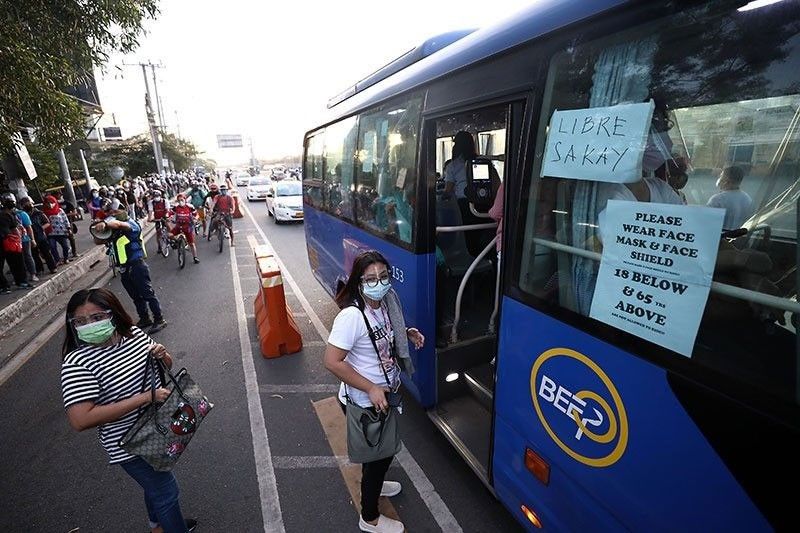Make The Most Of Direct Exposure with Transit Advertising Philippines
Make The Most Of Direct Exposure with Transit Advertising Philippines
Blog Article
Exactly How Transportation Advertising And Marketing Can Transform Public Transport Spaces Into Dynamic Advertising Platforms
Transportation marketing holds substantial possibility to redefine public transport rooms right into vivid advertising systems that involve and notify. By using innovative formats such as interactive kiosks and digital screens, brands can not only get to a varied audience yet additionally improve the overall commuter experience. This approach produces a special possibility for brand names to get in touch with customers in a setup that is often forgotten. As we discover the multifaceted benefits and progressing strategies of transportation marketing, it raises the concern of exactly how this makeover can redefine our communications with both brand names and the metropolitan environment.
Benefits of Transportation Advertising And Marketing

Furthermore, transportation advertising and marketing is extremely affordable compared to standard media. It permits marketers to achieve high impressions at reduced prices, making the most of roi. The restricted audience of travelers offers a possibility for brands to share their messages to people that are usually receptive throughout their traveling times.
Additionally, the vibrant nature of transportation advertising allows campaigns to be updated frequently, making sure that messaging remains relevant and prompt. This adaptability can be essential in responding to market fads or advertising occasions, maintaining the brand name top-of-mind for customers. Lastly, the pervasive existence of transportation advertising adds to brand recall; repeated direct exposure within acquainted traveling contexts reinforces brand recognition and fosters consumer loyalty, eventually boosting and driving sales brand name track record.
Kinds Of Transportation Marketing
Public transport systems provide various styles for marketing, each satisfying various advertising and marketing strategies and audience engagement methods. One popular type is outside bus and train wraps, which cover the entire car and produce a mobile billboard impact, enabling for high exposure in metropolitan settings. These covers can record focus as they go across active roads, getting to a varied audience.
Another preferred layout is interior advertising, which includes posters, electronic screens, and ads on transportation seats. These placements engage guests during their trip, strengthening brand messaging in a confined room. Digital shows, in particular, supply the benefit of dynamic web content, allowing advertisers to upgrade messages in real-time.
Terminal advertising and marketing is additionally significant, including posters, banners, and interactive kiosks within transportation terminals. These advertisements utilize foot web traffic and can target specific demographics based upon area.
Last but not least, advertising collaborations with transit authorities can cause distinct campaigns, such as themed transit experiences or occasions, boosting the total involvement with travelers. Each kind of transit advertising and marketing provides distinctive benefits, permitting brands to tailor their strategy to efficiently reach their target audience within the general public transportation ecosystem.
Engaging Commuters Effectively
Commuters are increasingly swamped with advertising messages during their day-to-day travels, making it essential for brand names to involve them in innovative methods. To record attention in this congested room, marketers should prioritize creative thinking and relevance. Using eye-catching visuals and concise messaging can dramatically boost the likelihood of engagement.
Interactive aspects, such as QR codes or increased reality features, can also transform static advertisements right into immersive experiences, promoting a much deeper connection with the target market. Brands must concentrate on addressing commuters' rate of interests and demands, customizing messages to reverberate with their way of living, whether via promos for neighborhood businesses or solutions designed to improve their commuting experience.
In addition, timing plays an essential function; tactically putting ads during peak commuting hours can optimize visibility and influence. Engaging travelers effectively also involves leveraging social media assimilation, permitting travelers to share their experiences or promos directly pop over to this web-site from transit systems, therefore magnifying brand reach.
Essentially, effective involvement pivots on comprehending the commuter trip and developing engaging, interactive, and relevant advertising experiences that not just catch attention yet likewise drive action and commitment. By doing so, brand names can transform mass transit into a dynamic marketing platform that reverberates with its audience.

Measuring Marketing Impact
Just how can brands accurately analyze the efficiency of their marketing campaign en route settings? Measuring the influence of transit advertising and marketing needs a complex technique that combines measurable and qualitative metrics. One common approach is tracking interaction via mobile analytics, where brands can assess foot web traffic patterns and application interactions in the past, during, and after campaigns.
Studies can offer beneficial insights right into brand name recall and customer belief, permitting brand names to assess how well their messages reverberate with commuters. Additionally, keeping track of social media sites engagement related to particular campaigns can reveal shifts in public assumption and brand conversation.

In addition, collaborating with transit agencies can enhance measurement accuracy, as they commonly have thorough group data on ridership trends. By integrating these methodologies, brands can develop an extensive understanding of their marketing performance, making sure that their projects not just get to yet additionally influence their target market properly.
Future Fads en route Advertising And Marketing
A substantial change is anticipated en route advertising as technical advancements and changing consumer behaviors reshape the landscape. Transit Advertising Philippines. The assimilation of electronic screens and anchor interactive media is anticipated to boost interaction, enabling brands to supply vibrant content that resonates with varied target markets. As public transport systems embrace clever innovation, advertisers will certainly utilize real-time data analytics to tailor messages based upon traveler demographics and behaviors
In addition, increased truth (AR) is positioned to reinvent the way travelers engage with advertisements. By giving immersive experiences, AR can transform a mundane trip into an appealing narrative that records focus and cultivates brand name loyalty. This technology will likely motivate advertisers to develop more experiential projects that drive consumer communication.
Sustainability is one more the original source critical fad influencing transportation advertising. As environmental awareness expands, brands will significantly look for to line up with environmentally friendly practices, using lasting materials and advertising environment-friendly efforts within their projects.
Conclusion
To conclude, transit marketing supplies considerable benefits by improving brand exposure and involving a restricted audience. With numerous formats, such as exterior covers and electronic screens, it transforms mass transit into a dynamic advertising and marketing system. Efficient involvement strategies and robust dimension strategies better enhance its influence. As fads develop, the capacity for cutting-edge communications in between commuters and brand names is positioned to expand, ensuring that transit advertising and marketing continues to be an important component of modern advertising strategies.
Transportation marketing holds considerable potential to redefine public transportation spaces right into vivid advertising and marketing systems that educate and involve. The pervasive presence of transportation marketing contributes to brand name recall; duplicated exposure within acquainted travel contexts enhances brand name understanding and fosters customer loyalty, ultimately driving sales and boosting brand credibility.
How can brand names precisely evaluate the effectiveness of their advertising and marketing campaigns in transportation atmospheres?In conclusion, transportation advertising supplies considerable benefits by improving brand name exposure and involving a captive target market. Transit Advertising Philippines. As patterns evolve, the possibility for innovative communications between brand names and commuters is poised to grow, making sure that transit advertising and marketing stays an important component of contemporary advertising and marketing approaches
Report this page